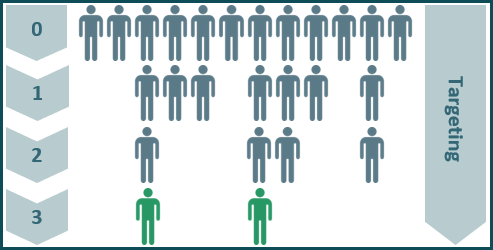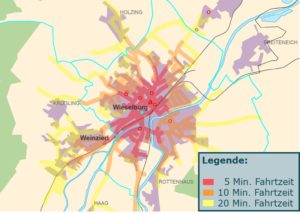Product launch orphan drug
Introduction
A biotech company was faced with the challenge of compiling the relevant target group for the product launch of a rare neuromuscular disease and planning suitable sales force structures.
In contrast to classical indications and therapeutic areas, the area of rare diseases generally lacks competitor products and corresponding data with which potentials can be determined 1:1. In addition, due to the complexity of the diseases and therapies, different target groups (general practitioners, specialists, ambulances, different departments and centres in the hospital, laboratories, etc.) must be considered.
Sales force work as such is therefore less oriented towards describing the advantages of one’s own product than towards supporting the correct diagnosis and subsequent therapy of the rare disease. As a rule, patients must first be identified with relatively great effort and an awareness of the disease on the part of the treating persons must be created. With over 8,000 different rare diseases, this is a great challenge and the proverbial search for the needle in the haystack.
Due to all these uncertainties, a product launch for a rare disease requires professional and structured preparation that should be supported by individual concepts and data.
Task
SALETELLIGENCE had to support the process of compiling the target group and sales force planning (sizing and structure) with appropriate analyses and tools and thus relieve the internal sales force. In addition, the field service should receive an optimal overview of its area and the relevant contact persons as well as available information.
Solution
First of all, a suitable concept was developed for each target group based on the existing customer questions and the available or ascertainable data. Together with the biotech company’s project team, it was determined which diagnoses and treatment options are currently available for the disease and which concomitant diseases or false diagnoses are frequently made.
SALETELLIGENCE then used various data sources and analytical methods combined with detailed desk research to investigate, segment and process the target groups accordingly.
In the hospital sector, specialist departments and centres that are already dealing with the disease and have established corresponding specialisations could be identified on the basis of the detailed clinic quality reports. The responsible persons or special outpatient departments were then supplemented in the second step by intensive desk research. In addition, further specialist departments and centres could be identified via concomitant diseases or frequent misdiagnoses, which, in addition to the already specialised hospitals, could also have relevant patients. In addition to the primary target group, these can also be looked after by the field service either with regard to the available treatment options or for referrals to the special centres.
In the private sector, potentially relevant contact persons were identified on the basis of relevant marker products (e.g. standard therapies for pre/accompanying diseases or specialised therapies which require a corresponding infrastructure of practice or specialisation of doctors, etc.) in conjunction with relevant information such as specialisations, desk research information. The aim is to shorten the treatment of symptoms, which often takes years, by diagnosing them earlier and, if necessary, referring them to the special centres.
In addition, the established practices and the special centres have been spatially linked so that, for example, areas in rural areas where no special centre is available can be discovered and appropriately looked after.
All findings of these work steps could then be used for resource planning in order to determine the target group size, the visit planning and thus the suitable sales force size objectively and data-based. The identified target groups and planned visit resources then formed the basis for the development of the regional sales force structures, in which additional criteria such as employee residences, infrastructure, catchment areas of the centres and much more were taken into account.
Results
By compiling and pre-selecting the relevant target groups, the sales force was able to quickly and purposefully establish important contacts and establish the therapy. In the daily work of the field service, the clear data preparation as well as the fast availability of the results provided good support.
It was also very helpful for the office staff to have a structured and data-based decision-making basis for the size and structure of the sales force for communication with the headquarters.



